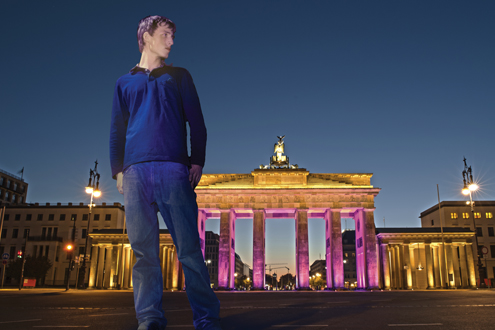
Alexander Voll celebrates the 25th anniversary of the fall of the Berlin Wall
The “Anti-Fascist Protective Barrier,” as the wall was called by East German authorities, divided Berlin for nearly 30 years. Far from protecting anyone, its purpose was to keep the citizens of the GDR imprisoned, as the mass emigration of East Germans to the West threatened economic stability.
Erected between 1961 and 1975, the wall separated the city right down the middle, cutting off vital traffic links and breaking apart families. Minefields and border police with shoot-to-kill orders thwarted any further attempts by East Germans to look for a better future in the West. While the Communists tightened their authoritarian grip on people’s lives in East Berlin, the Western part of the city became a walled-in outpost of freedom and democracy, thanks to an enormous effort made by the Western allies — especially the U.S.
Mikhail Gorbachev then embarked on reforms in the Soviet Union — Perestroika and Glasnost encouraged protestors in Poland, Hungary, and the Czech Republic to believe that change was possible. Frustrated by the unwillingness of the East German regime to allow reforms, people started to express their anger in weekly demonstrations in Leipzig and other East German cities. These so-called Monday demonstrations grew rapidly, culminating when hundreds of thousands of people demonstrated in the fall of 1989. After decades of oppression, their peaceful approach and demands for fundamental human rights had mobilized the masses.
East German authorities, realizing that they could not rely on support from Soviet troops, finally gave in to protesters’ demands: on November 9, 1989, the Berlin Wall fell, enabling the 17 million citizens of East Germany to travel freely across the border. Families and friends were reunited and the arbitrary division ended.
With the support of the U.S., Germany was reunited in 1990. The fall of the wall was the result of a popular uprising demanding liberty and self-determination — the victory of nonviolence over an oppressive government and human dignity over dictatorship. Not only did it allow Germany to reunite, but it also ended the arbitrary division of Europe into two opposing camps. The remnants of the wall have become a symbol for peaceful revolutions; their legacy remains vital in the 21st century.
Please visit www.Germany.info for more information on what the German embassy in Washington is doing to commemorate this formative event.
Alexander Voll is with the German Information Center in Berlin.





